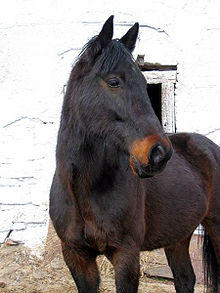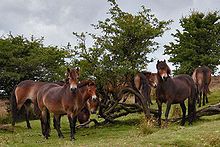
Palomino is a genetic color in horses, consisting of a gold coat and white mane and tail; the degree of whiteness can vary from bright white to yellow. Genetically, the palomino color is created by a single allele of a dilution gene called the cream gene working on a "red" (chestnut) base coat. Palomino is created by a genetic mechanism of incomplete dominance, hence it is not considered true-breeding. However, most color breed registries that record palomino horses were founded before equine coat color genetics were understood as well as they are today, therefore the standard definition of a palomino is based on the visible coat color, not heritability nor the underlying presence of the dilution gene.
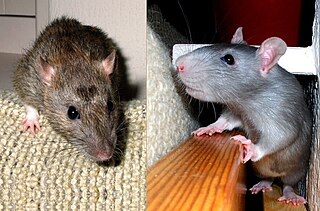
A dilution gene is any one of a number of genes that act to create a lighter coat color in living creatures. There are many examples of such genes:

Bay is a hair coat color of horses, characterized by a reddish-brown or brown body color with a black point coloration on the mane, tail, ear edges, and lower legs. Bay is one of the most common coat colors in many horse breeds.

Buckskin is a hair coat color of horses, referring to a color that resembles certain shades of tanned deerskin. Similar colors in some breeds of dogs are also called buckskin. The horse has a tan or gold colored coat with black points. Buckskin occurs as a result of the cream dilution gene acting on a bay horse. Therefore, a buckskin has the Extension, or "black base coat" (E) gene, the agouti gene (A) gene, which restricts the black base coat to the points, and one copy of the cream gene (CCr), which lightens the red/brown color of the bay coat to a tan/gold.
At right is displayed the color traditionally called liver.
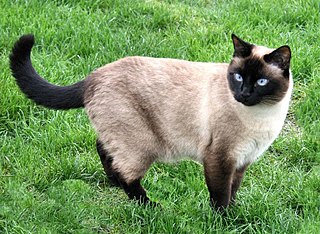
Point coloration is animal coat coloration with a pale body and relatively darker extremities, i.e. the face, ears, feet, tail, and scrotum. It is most recognized as the coloration of Siamese and related breeds of cat, but can be found in dogs, rabbits, rats, sheep, guinea pigs and horses as well.
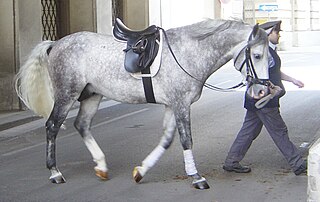
A gray horse has a coat color characterized by progressive depigmentation of the colored hairs of the coat. Most gray horses have black skin and dark eyes; unlike some equine dilution genes and some other genes that lead to depigmentation, gray does not affect skin or eye color. Gray horses may be born any base color, depending on other color genes present. White hairs begin to appear at or shortly after birth and become progressively more prevalent as the horse ages as white hairs become intermingled with hairs of other colors. Graying can occur at different rates—very quickly on one horse and very slowly on another. As adults, most gray horses eventually become completely white, though some retain intermixed light and dark hairs.

The cream gene is responsible for a number of horse coat colors. Horses that have the cream gene in addition to a base coat color that is chestnut will become palomino if they are heterozygous, having one copy of the cream gene, or cremello, if they are homozygous. Similarly, horses with a bay base coat and the cream gene will be buckskin or perlino. A black base coat with the cream gene becomes the not-always-recognized smoky black or a smoky cream. Cream horses, even those with blue eyes, are not white horses. Dilution coloring is also not related to any of the white spotting patterns.

The champagne gene is a simple dominant allele responsible for a number of rare horse coat colors. The most distinctive traits of horses with the champagne gene are the hazel eyes and pinkish, freckled skin, which are bright blue and bright pink at birth, respectively. The coat color is also affected: any hairs that would have been red are gold, and any hairs that would have been black are chocolate brown. If a horse inherits the champagne gene from either or both parents, a coat that would otherwise be chestnut is instead gold champagne, with bay corresponding to amber champagne, seal brown to sable champagne, and black to classic champagne. A horse must have at least one champagne parent to inherit the champagne gene, for which there is now a DNA test.
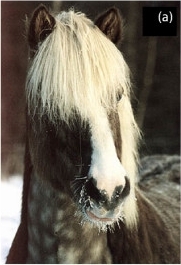
The silver or silver dapple (Z) gene is a dilution gene that affects the black base coat color and is associated with Multiple Congenital Ocular Abnormalities. It will typically dilute a black mane and tail to a silvery gray or flaxen color, and a black body to a chocolaty brown, sometimes with dapples. It is responsible for a group of coat colors in horses called "silver dapple" in the west, or "taffy" in Australia. The most common colors in this category are black silver and bay silver, referring to the respective underlying coat color.

Equine coat color genetics determine a horse's coat color. Many colors are possible, but all variations are produced by changes in only a few genes.

The dun gene is a dilution gene that affects both red and black pigments in the coat color of a horse. The dun gene lightens most of the body while leaving the mane, tail, legs, and primitive markings the shade of the undiluted base coat color. A dun horse always has a dark dorsal stripe down the middle of its back, usually has a darker face and legs, and may have transverse striping across the shoulders or horizontal striping on the back of the forelegs. Body color depends on the underlying coat color genetics. A classic "bay dun" is a gray-gold or tan, characterized by a body color ranging from sandy yellow to reddish brown. Duns with a chestnut base may appear a light tan shade, and those with black base coloration are a smoky gray. Manes, tails, primitive markings, and other dark areas are usually the shade of the undiluted base coat color. The dun gene may interact with all other coat color alleles.

Chestnut is a hair coat color of horses consisting of a reddish-to-brown coat with a mane and tail the same or lighter in color than the coat. Chestnut is characterized by the absolute absence of true black hairs. It is one of the most common horse coat colors, seen in almost every breed of horse.

Horses exhibit a diverse array of coat colors and distinctive markings. A specialized vocabulary has evolved to describe them.

Black is a hair coat color of horses in which the entire hair coat is black. Black is a relatively uncommon coat color, and it is not uncommon to mistake dark chestnuts or bays for black.

Smoky black or just smoky is a hair coat color of horses which appears dark brown to black in color. Smoky black is produced by the action of a heterozygous cream gene on an underlying black coat color. Therefore, smoky black is a member of the cream family of coat color dilutions, and found in horse populations that have other cream-based colors such as palomino, buckskin, perlino, cremello and smoky cream. All smoky blacks must have at least one parent with the cream gene, and a smoky black can only be verified through DNA testing or parentage. Smoky black has been mistaken for faded black, dark bay or brown, grullo or even liver chestnut.

A horse coat color that has the sooty trait is characterized by black or darker hairs mixed into a horse's coat, typically concentrated along the topline of the horse and less prevalent on the underparts. Sootiness is presumed to be an inherited trait, though the precise genetic mechanism, or series of mechanisms, is not well understood.

Pangaré is a coat trait found in some horses that features pale hair around the eyes and muzzle and underside of the body. These pale areas can extend up to the flanks, throat and chest, behind the elbows, in front of the stifle, and up the buttock. Animals with the pangaré trait are sometimes called "mealy" or "light-pointed". The color of these lighter areas depends on the underlying color and ranges from off-white to light tan. This type of coloration is most often found in breeds such as the Fjord horse, Exmoor Pony, and Haflinger. Wild equids like the Przewalski's Horse, Onager, African Wild Ass, Kiang as well as the domestic Donkey exhibit pangaré as a rule. Pangaré is thought to be a type of protective countershading. Horse foals are often born with "foal pangaré" or light points, especially over black haired areas, which they lose when they shed their foal coats.

Flaxen is a genetic trait in which the mane and tail of chestnut-colored horses are noticeably lighter than the body coat color, often a golden blonde shade. Manes and tails can also be a mixture of darker and lighter hairs. Certain horse breeds such as the Haflinger carry flaxen chestnut coloration as a breed trait. It is seen in chestnut-colored animals of other horse breeds that may not be exclusively chestnut.
The agouti gene, the Agouti-signaling protein (ASIP) is responsible for variations in color in many species. Agouti works with extension to regulate the color of melanin which is produced in hairs. The agouti protein causes red to yellow pheomelanin to be produced, while the competing molecule α-MSH signals production of brown to black eumelanin. In wildtype mice, alternating cycles of agouti and α-MSH production cause agouti coloration. Each hair has bands of yellow which grew during agouti production, and black which grew during α-MSH production. Wildtype mice also have light-colored bellies. The hairs there are a creamy color the whole length because the agouti protein was produced the whole time the hairs were growing.

